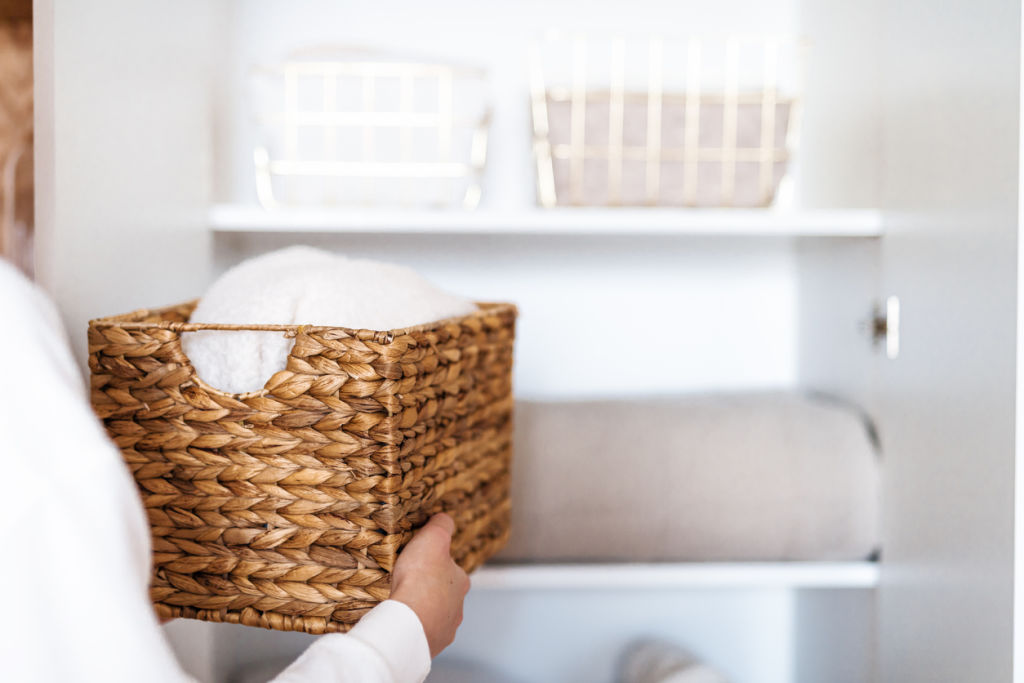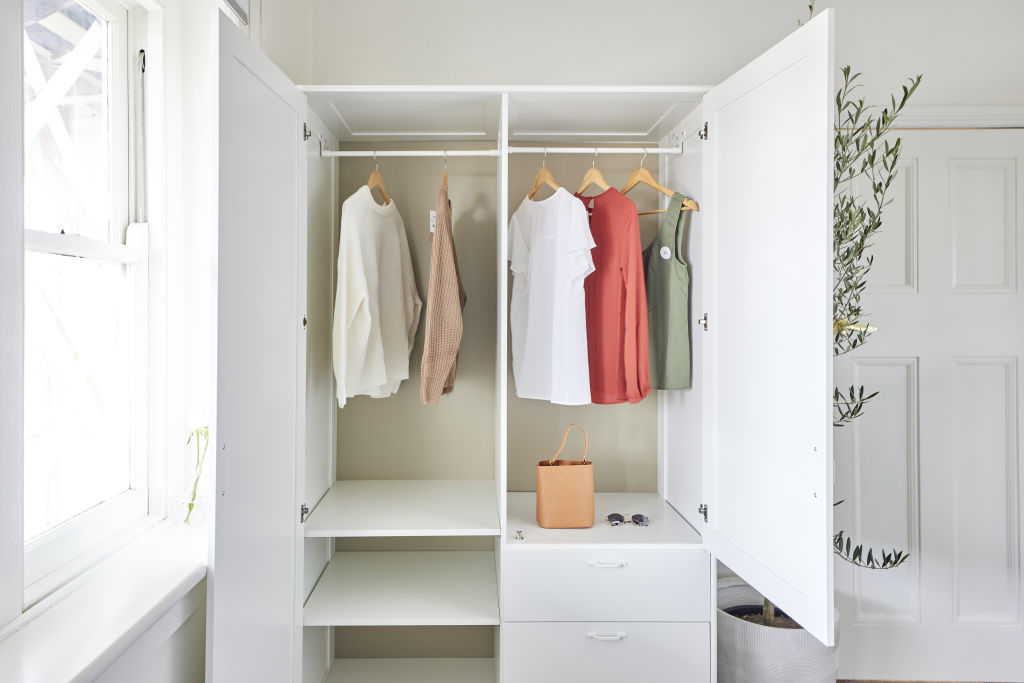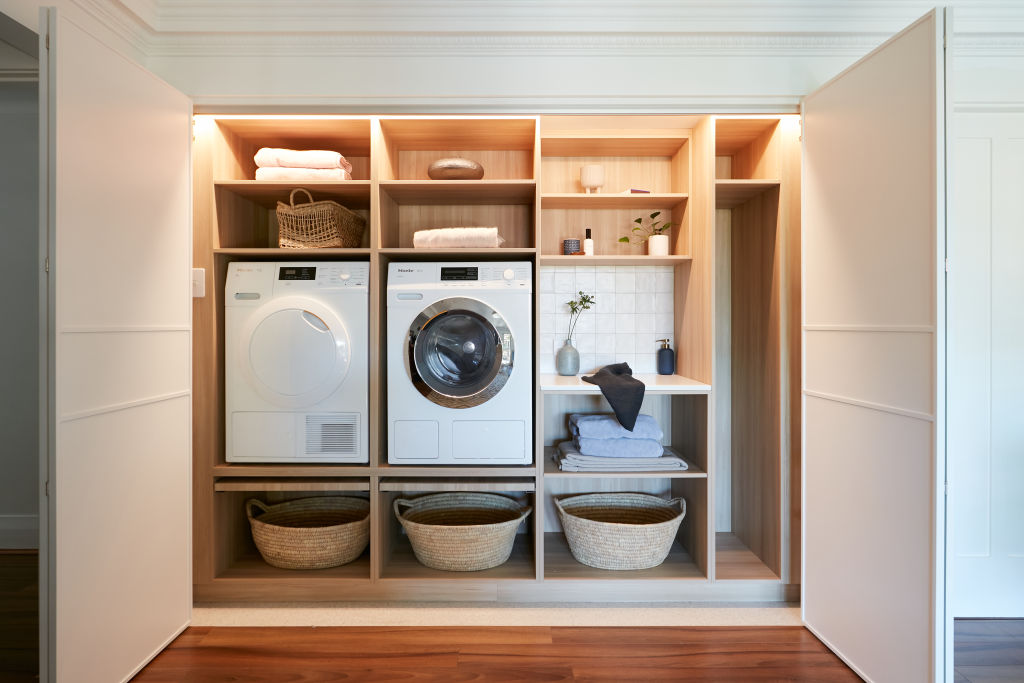The best storage solutions for small spaces to help rid your home of clutter

If you’re dealing with a small home – or small spaces within your home – chances are you’re also dealing with clutter.
Professional home organiser Cath Buxton from My Curated Life, who provides her clients with a wealth of storage ideas, says the first step in creating a more relaxing home environment is clearing the clutter.
“Space is at such a premium when you’re in a smaller home, and if it’s cramped with stuff that you don’t need … then you’re simply wasting precious space,” says Buxton, who operates My Curated Life with founder Lisa Hodgson “Before any organising takes place, we will always look at the client’s possessions to remove anything they don’t need, use, like, or that is duplicated.”
Once you’ve decluttered, you can dive into storage solutions to ensure there is a home for everything.
Here are My Curated Life’s top tips for putting things away properly.
Kitchen storage solutions
The kitchen is one of the most used areas in the home. It’s also one that needs to function particularly well.
If you’re designing or renovating a kitchen, Buxton has one word for you: drawers. She suggests installing drawers and shallow shelves instead of cupboards and deep shelves.
“It’s very common these days to see drawers instead of cupboards [in kitchens] – for a good reason: drawers make it so much easier to see everything you have, as opposed to cupboards where things get lost at the back,” says Buxton.

When it comes to the pantry, the same principle applies: drawers where possible, as well as turntables or “Lazy Susans” to help you reach items at the back. Buxton also advocates for getting foods out of packets and into containers.
“One of the biggest things that wastes space in pantries, in particular, is packets,” she says. “I often suggest decanting items into airtight containers such as OXO Pop. Not only do the ingredients remain fresher, but it’s much easier to see exactly what you have and use it, rather than ending up with five half-used packs of flour … You take away the packaging, and automatically, a third of the stuff is gone.”
Other tips include using the backs of doors to store items such as spices; putting in kickboard drawers at foot level to store infrequently used items such as bakeware; installing bin cabinetry so your bin doesn’t take up floor space; employing expandable pullout systems for things like pot lids; and investing in a moveable trolley.
Bedroom storage solutions
Unless you have a Carrie Bradshaw-style walk-in wardrobe, finding places for your bedroom belongings can be challenging.
Buxton is a fan of choosing pieces of furniture for your bedroom that provide secret storage – think gas lift beds that lift to house your linen and seasonal clothing and benches that double as a place to sit and store your shoes.

“The other place that really is typically not well utilised is behind the door,” says Buxton. “Elfa is a brand that we love to use. They’ve got some wonderful behind-the-door storage solutions … If you’re in a rental, they can be clipped on top and bottom so you don’t have to drill.”
Wardrobe-wise, Buxton reiterates the importance of drawers over shelves, as shelves can be messier and less practical. Adequate hanging space is also essential, as are slimline coat hangers (she recommends velvet flocked), so you’re not wasting valuable real estate space with bulky ones.
If you cannot change a less-than-ideal wardrobe design, Buxton would use mesh drawers (like the kind you can find at Ikea or Howards Storage World). She also suggests folding your clothing Marie Kondo-style to save space and implementing a seasonal wardrobe system where out-of-season clothes are stored elsewhere until they’re needed.
Bathroom storage solutions
Despite being one of the smaller spaces in a house, bathrooms are tasked with storing a high volume of products.
Buxton’s first tip, if you’re renovating yours, is to put in a slimline mirrored cabinet with storage behind it.
“I can’t tell you the amount of houses I’ve been into that have a bathroom mirror in the wall, but they’ve missed the opportunity to include storage behind it for toothbrushes, skincare or makeup,” she says.

Again, go for drawers over cupboards. The Elfa back-of-door system can also be helpful for bathroom storage, as can slimline trolleys, which can be picked up from places like Ikea to sit in awkward spaces such as between the toilet and vanity.
Buxton also advises putting a recessed shelf in the shower to house your products. If you’re renting, she says there are plenty of good shower caddies – including those that use suction – so you don’t need to put your products on the shower floor. Towel hooks are also available in stick-on varieties.
Laundry storage solutions
Laundries can quickly become chaotic dumping grounds for household belongings.
Rather than having laundry baskets taking up valuable floor space, Buxton recommends installing large drawers if you can. Otherwise, she recommends slimline laundry baskets from brands like Joseph Joseph.
If you’re designing a laundry, Buxton says it’s important to account for the tall, skinny items you might want to store in there, such as brooms and ironing boards, by ensuring there’s a cupboard with height.
She also suggests putting in a hanging rail for clothing that is airing or drying.

When it comes to linen, Buxton has a rule.
“A good rule of thumb is you shouldn’t have more than two towels per person and two sets of sheets per bed,” she says. “A set on the bed, a set in the wash, or a summer set and a winter set. Same with towels, it’s best to have a set that’s being used and a set in the cupboard or the wash, plus one additional set for guests.”
It can be a good idea to store linen by dedicating a container in the cupboard for each person or room, or by labelling the baskets “single bed”, “queen bed” and so on.
Another idea is to store each bedroom’s linen in the bedroom itself.
Overall, Buxton says storing things well is about “systemising your home”.
“The more you have a well-planned and well-organised system for each room in your home that everyone understands and everyone respects … the happier, the more relaxing and better functioning your home will be,” she says.
We recommend
We thought you might like
States
Capital Cities
Capital Cities - Rentals
Popular Areas
Allhomes
More







